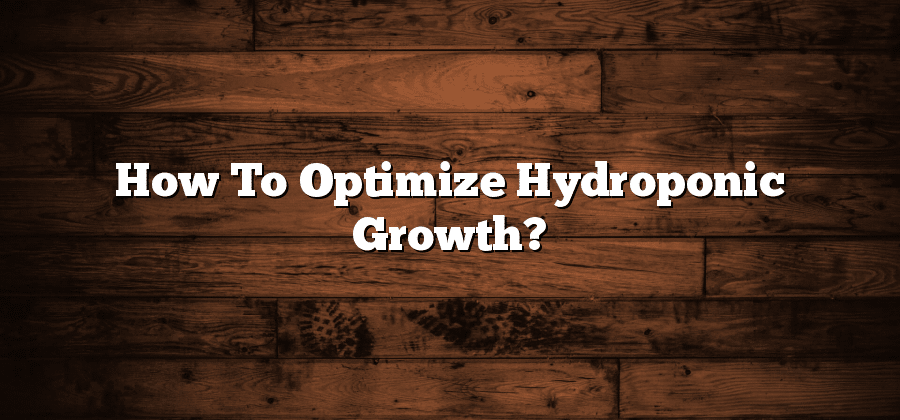Understanding the Basics of Hydroponic Systems
Hydroponic systems have gained popularity among indoor gardeners due to their ability to produce high-quality crops in limited spaces. These systems involve growing plants without soil and instead using a nutrient-rich water solution to nourish the plants directly. By eliminating the need for traditional soil-based growing methods, hydroponics offer a more efficient and controlled environment for plant growth.
One of the key components of a hydroponic system is the growing medium. Unlike traditional gardening, where plants rely on soil to anchor their roots and provide nutrients, hydroponic systems use a variety of mediums such as perlite, vermiculite, coconut coir, or rockwool. These mediums provide support for the plants’ roots while allowing them easy access to the nutrient solution. The choice of growing medium depends on various factors such as the type of plants being grown, water retention capabilities, and pH levels. Additionally, hydroponic systems require careful monitoring and adjustment of water and nutrient levels to ensure optimal plant growth.
Selecting the Right Nutrient Solution for Hydroponic Growth
Hydroponic systems provide an efficient and controlled environment for plants to grow without the use of soil. One of the key factors that contribute to the success of hydroponic growth is selecting the right nutrient solution. The nutrient solution serves as the primary source of essential elements and minerals needed for plant development.
When choosing a nutrient solution for your hydroponic system, it is crucial to consider the specific needs of your plants. Different plants have different nutritional requirements, so it is important to select a solution that caters to these needs. Reading labels and understanding the composition of nutrient solutions can help you determine whether they provide a balanced mix of macro and micronutrients. Additionally, considering the growth stage of your plants is essential, as nutrient requirements may vary during different stages of growth. Experimenting with different nutrient solutions and observing the growth and health of your plants can also help in finding the most suitable option for your hydroponic setup.
Managing pH Levels for Optimal Hydroponic Growth
Maintaining the ideal pH levels is essential for ensuring optimal hydroponic growth. pH level refers to the acidity or alkalinity of the nutrient solution in a hydroponic system. Different plants have different pH requirements, and as such, it is crucial to monitor and adjust the pH levels accordingly.
Most hydroponic plants thrive within a pH range of 5.5 to 6.5. This slightly acidic to neutral pH range allows for the efficient absorption of essential nutrients. To maintain the pH levels within the desired range, it is important to regularly test the nutrient solution using a pH meter or test kit. If the pH deviates from the optimal range, adjustments can be made by adding pH adjusters, such as pH up or pH down solutions. By regularly monitoring and managing the pH levels, hydroponic growers can ensure that their plants receive the optimal nutrient uptake, resulting in healthy and productive growth.
Maintaining Proper Lighting for Hydroponic Plants
Proper lighting is crucial for the successful growth of plants in a hydroponic system. In an indoor setting where natural sunlight is limited, it becomes even more important to provide the right amount and quality of artificial light. When selecting lighting options for your hydroponic system, consider the specific needs of your plants. Different plants have varying light requirements, including the intensity and duration of light exposure. It is essential to choose lighting that can mimic the sun’s spectrum and adjust the intensity based on the growth stage of the plants. LED grow lights are popular among hydroponic growers due to their energy efficiency, customizable spectrum options, and long lifespan.
To maintain proper lighting for optimal growth, it is essential to monitor the distance between the light source and the plants. Light intensity diminishes as the distance increases, so placing the lights too far can result in insufficient lighting for the plants. On the other hand, if the lights are kept too close to the plants, it can lead to heat-related damage. Creating a balanced distance ensures that the plants receive an adequate amount of light without any adverse effects. Additionally, it is crucial to regularly clean the light fixtures and replace any worn-out bulbs to ensure consistent performance. By providing the right lighting conditions and maintaining the fixtures, you can ensure healthy growth and abundant yields in your hydroponic system.
Controlling Temperature and Humidity in Hydroponic Systems
Proper temperature and humidity control is crucial for the success of any hydroponic system. The ideal temperature range for hydroponic plants is typically between 65°F and 80°F (18°C and 27°C). This range provides optimal conditions for nutrient absorption and metabolic processes, promoting healthy growth and development.
To maintain the desired temperature, it is important to consider several factors. First, choose a suitable location for your hydroponic setup, away from direct sunlight or drafts that can cause temperature fluctuations. Additionally, investing in a reliable thermometer and a heating or cooling system can help regulate the temperature within the desired range. Monitoring the temperature daily and making adjustments as needed will ensure that your hydroponic plants thrive.
In addition to temperature, humidity levels play a vital role in hydroponic systems. The optimal humidity range for most plants is around 50% to 70%. However, it is important to note that different plants may have specific humidity requirements, so be sure to research and cater to their specific needs. Excess humidity can lead to the growth of mold and mildew, while low humidity can result in insufficient moisture absorption. Maintaining proper humidity levels can be achieved through the use of humidifiers or dehumidifiers, depending on the requirements of your hydroponic system.
By carefully controlling the temperature and humidity levels in your hydroponic system, you are optimizing the growing conditions and setting the foundation for healthy and productive plants.






